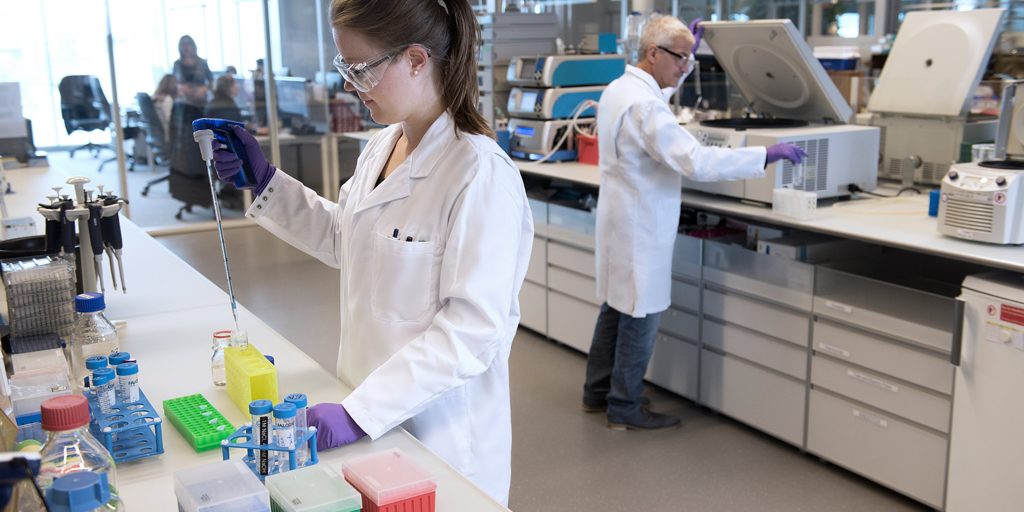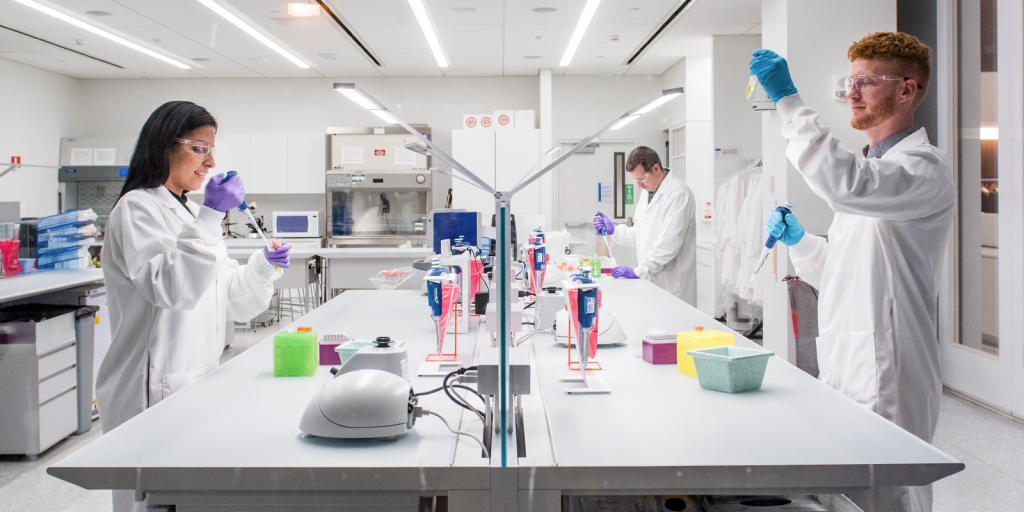Novartis is a multinational group of companies specializing in the research, development, manufacturing and marketing of a broad range of healthcare products. Headquartered in Basel, Switzerland, Novartis employed 118,700 associates as of December 31, 2015. The company has a presence in approximately 180 countries around the world.

Understanding Novartis Business Segments
Following the completion of a series of transactions in 2014 and 2015, the Group’s portfolio is organized into three global operating divisions
- Pharmaceuticals: Innovative patent-protected prescription medicines
- Alcon: Surgical, ophthalmic pharmaceutical and vision care products
- Sandoz: Generic pharmaceuticals and biosimilars
Novartis has discontinued operations in the following segments
- Vaccines and Diagnostics: Preventive human vaccines and blood-testing diagnostics
- Consumer Health: OTC (over-the-counter medicines)
- Animal Health

Understanding Pharmaceutical Business Segment
Pharmaceuticals segment researches, develops, manufactures, distributes and sells patented prescription medicines and is further organized in the following therapeutic segments:
- Oncology Therapeutic Segment: Novartis offers market leading cancer care products for the treatment of breast cancer, blood cancer, gastrointestinal cancer, lung cancer, renal and pancreatic cancer. Gleevec/Glivec, Jakavi, Tasigna, Femara, and Votrient are the leading oncology products in this segment.
- Cardio-metabolic Therapeutic Segment: The company offers prescription products for the treatment of type 2 diabetes and chronic heart failure. Entresto (sacubitril/valsartan), Galvus (vildagliptin) and Eucreas (vildagliptin and metformin) are the major products in this segment
- Immunology and Dermatology Therapeutic Segment: Novartis offers prescription products for the treatment of arthritis, spondylitis, and urticaria. It also offers products for prevention of acute organ rejection. Myfortic, Ilaris, and Xolair are leading products in this segment.
- Retina Therapeutic Segment: The company offers Lucentis (ranibizumab) for the treatment of age-related macular degeneration.
- Respiratory Therapeutic Segment: Novartis offers prescription products for the treatment of Chronic Obstructive Pulmonary Disease (COPD) and severe allergic asthma. TABI, Xolair, and Onbrez Breezhaler are leading products in this segment.
- Neuroscience Therapeutic Segment: The company offers prescription products for the treatment of multiple sclerosis, Parkinson’s and Mild-to-moderate Alzheimer’s disease. Gilenya, Exelon, and Comtan are leading products in this segment.
- Established Medicines Segment: The company offers prescription products for hypertension, heart failure, post-myocardial infarction, schizophrenia, malaria, ADHD, hypercholesterolemia, osteoporosis, hepatitis B, epilepsy, inflammation, and pain. Diovan, Exforge, Foradil, Tegretol , and Voltaren are leading products in this segment
Understanding Pharmaceutical Products Business Model

Understanding Pharmaceutical Products Business Model
In Pharmaceutical Product business, Novartis utilizes both direct and indirect channels to influence the prescribers (Doctors) to
- Prescribe new medicines to existing and new patients
- Get new patients for existing medications by making patients aware about their diseases
- Promote new indications for existing medications to providers
The company sells these products primarily to medication wholesalers and retailers, hospitals, government agencies and health maintenance organizations (HMOs). Following diagram shows how Novartis generates revenues in Pharmaceutical Product business.
Understanding Alcon Business Segment
Alcon is a leader in the research, development, manufacturing and marketing of eye care products worldwide. Alcon operates in three segments: Surgical, Ophthalmic Pharmaceuticals, and Vision Care. Each segment operates with specialized sales forces and marketing support.
- Surgical Business Segment: Surgical segment offers ophthalmic surgical equipment, instruments, disposable products and intraocular lenses for surgical procedures that address cataracts, vitreoretinal conditions, glaucoma and refractive errors.
- Ophthalmic Pharmaceuticals: Ophthalmic Pharmaceuticals segment develops and markets a broad range of Pharmaceuticals to treat chronic and acute conditions of the eye including glaucoma, elevated intraocular pressure (associated with glaucoma), eye infection and inflammation, eye allergies, dry eye, and retinal diseases.
- Vision Care: Vision Care segment develops and markets contact lenses and lens care products.

Understanding Surgical Devices Business Model
After getting regulatory clearance, Surgical Devices companies work with Payers to get the procedure approval. Companies then work through wholesalers to influence the hospitals and doctors to buy devices. In developing countries, Surgical Devices companies also partner with or directly offer financial assistance to patients. Companies also offer healthcare services around targeted therapy areas – patient and provider education, healthcare technology services and disease management services. In targeted areas Medical Devices companies also out-licence and in-license technology to generate revenues.
Following diagram shows how Alcon generates revenues in Surgical Devices business.
Understanding Sandoz Business Segment
Sandoz Division is a leader in Generic Pharmaceuticals and Biosimilars and sells products in more than 160 countries. Sandoz is organized globally in three franchises: Retail Generics, Anti-Infectives, and Biopharmaceuticals & Oncology Injectables.
- Retail Generics: Sandoz develops, manufactures and markets active ingredients and finished dosage forms of pharmaceuticals to third parties. Retail Generics includes the areas of dermatology, respiratory and ophthalmics, as well as cardiovascular, metabolism, central nervous system, pain, gastrointestinal, and hormonal therapies. Finished dosage form anti-infectives sold to third parties are also a part of Retail Generics.
- Anti-Infectives: Sandoz manufactures active pharmaceutical ingredients and intermediates— mainly antibiotics—for internal use by Retail Generics and for sale to third-party customers.
- Biopharmaceuticals & Oncology Injectables: Sandoz develops, manufactures and markets protein- or other biotechnology-based products known as biosimilars and provides biotechnology manufacturing services to other companies, and in Oncology Injectables, Sandoz develops, manufactures and markets cytotoxic products for the hospital market.

Understanding Generics (Gx) Business Model
Generic Pharmaceutical business model is characterized by the production and selling copies of brand-name medications that are comparable to branded medication product in dosage form, strength, route of administration, quality, performance, and intended use. This is achieved through the reverse engineering of the medication invented by the big Pharmaceutical companies and sold at lower costs. Gx companies sell these products primarily to medication wholesalers and retailers, hospitals, government agencies and health maintenance organizations (HMOs). In targeted markets companies also out-licence and in-license Gx products to generate revenues.
Novartis Revenue Model
As discussed earlier, Novartis sells Pharmaceutical products to patients through medication wholesalers & retailers, hospitals, government agencies & HMOs and sells Surgical Devices to hospitals through wholesalers.

Novartis Revenues by Business Segment FY’15
In FY’15 (fiscal year ended December 31, 2015), Novartis generated $50.4 billion of total revenues. Of these total revenues, Novartis generated.
- $30.4 billion revenues, 60.4% of the total, from the Pharmaceutical segment
- $9.8 billion revenues, 19.5% of the total from Alcon segment
- $9.2 billion revenues, 18.2% of the total from Generics Pharmaceutical segment
- $1.0 billion revenues, 1.9% of the total from Others segment
Novartis Profits and Profit Margins FY’15
Of the $50.4 billion of Novartis total revenues in FY’15, $17.4 billion were the costs of goods sold. This resulted in $33.0 billion of gross profit and a gross margin of 65.5%. Novartis other operating costs were $24.0 billion. These include marketing & administrative expenses, research and development (R&D) expenses and other operating expenses. This resulted in $18.7 billion of operating profit and an operating margin of 37.2%. After interest and other non-operating income and expenses and income taxes, Novartis had a net profit of $17.8 billion and a net margin of 35.3%.








